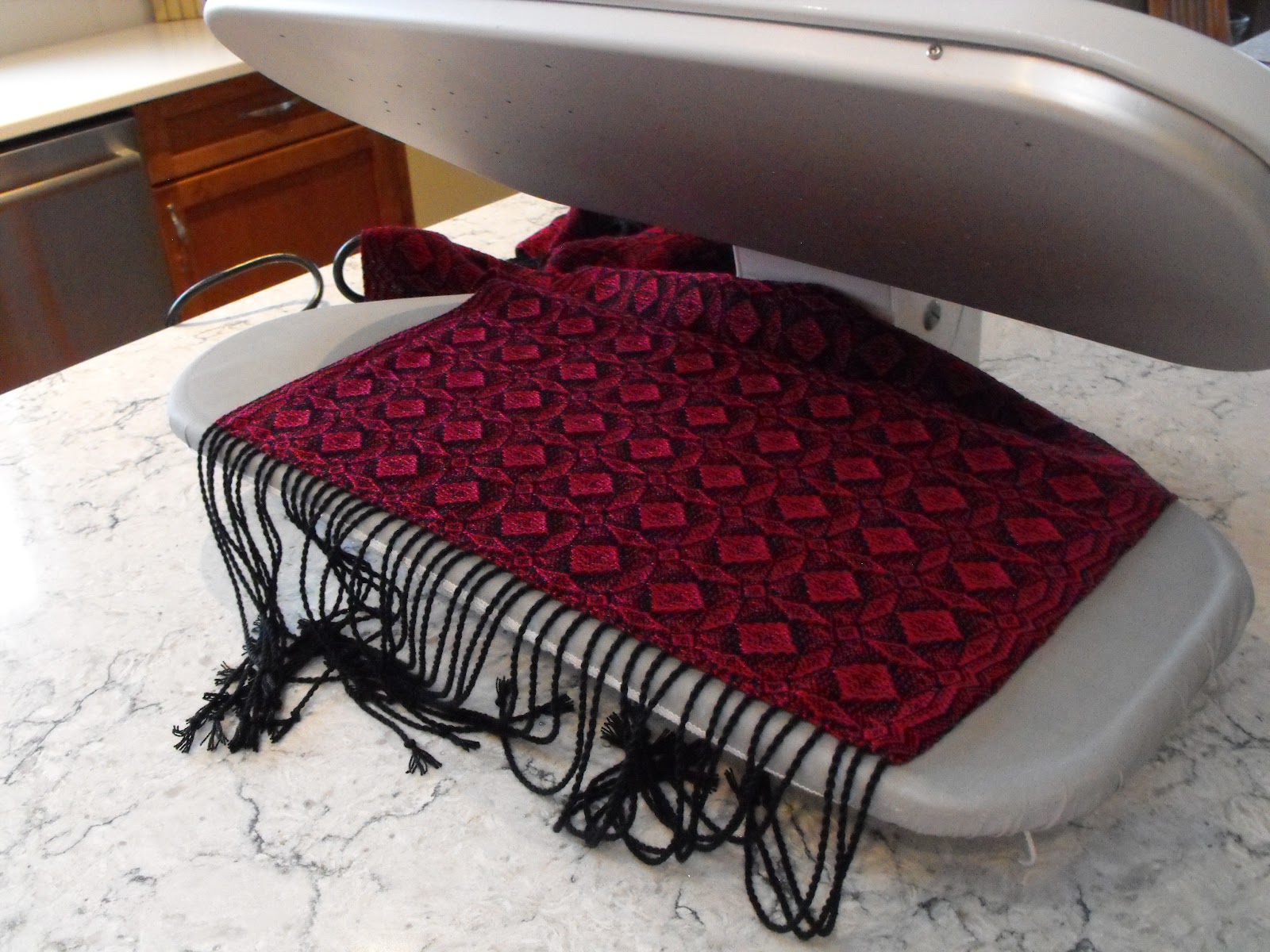I am doing a commission for a lovely black and dark raspberry red Tencel shawl. The pattern is a fancy twill that has a trellis of diamonds running the length of the shawl. So pretty!
Does anyone else to this? I sit at the loom for a measured period of time but I use physical markers to set the time, for example I’ll weave until I finish the pirn or until the cd is finished.My favorite measure of time is, I’ll weave until the top of the containers that hold the floating selvages reach the top of the back beam. That is also usually the time that the paper that I’m using to keep the warp separate on the warp beam hits the floor, it makes a satisfying thump. So many ways to measure loom time without ever looking at a clock!Here is a fun photo showing both sides of the shawl, one side is red dominant and the other is predominantly black.I’ve finished weaving the shawl and have done the hand hem stitching. The last step is to cut the shawl off the loom; I used 1 inch metal venetian blinds as spacers. A trick that I learned the hard way is to make sure that you pulled the warp far enough forward so that when you cut the warp it doesn’t snap back and you lose the threads through the reed. It also helps if you keep the tension of the warp loose. I loosely braided the fringe and the shawl goes into the wash. I like to use a gentle soap like Eucalan. The excess water is squeeze out of the shawl in towels and then the shawl is placed on a drying rack to dry. I remove the loose braids from the fringe so the fringe can dry flat before it is twizzled.After the shawl is dry, but before pressing the shawl, I like to twizzle the fringe. The shawl is now ready for McSteamy, the steam presser. This is when the shine that Tencel is known for appears.The final shawl is stunning.Final Garden Photo is a winter planter that we lasagne planted with bulbs and pansies. Lasagne planting means that we layered bulbs into the planter so we will get a succession of blooming. In the bottom layer is some tulips, then some compost/dirt and a layer of daffodils then more compost/dirt and the last layer of bulbs are the Dutch irises and then the last layer of compost/dirt and the pansies on the top. The Dutch irises are just starting the spear their way through the pansies. It is the first year for trying this process but we have high hopes!










I totally do the physical timer thing! I think mine is because I sit to one side on the spectrum and I yearn for full/empty, finished/not started, etc. Part way really irritates me so I use physical timers to get a sense of completion :) Love these shawls and you've got me thinking about ordering more tencel for some autumn loom projects once the summer cottons are off!
ReplyDelete